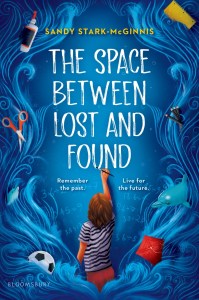Over the past year, I’ve been experimenting with a set of emerging technologies in the publishing field, collectively called Web3 publishing solutions. Available tools in Web3 include smart-contracts, immutable ledgers, decentralized files, token-mediated licenses, autonomous organizations, artificial intelligence, and more. There’s a lot to learn, but these building blocks can be used to empower authors and reader communities, and to provide teachers with a cross-curricular bridge between STEM and Language Arts.
In their most favorable format, the upcoming generation of ebooks promises to be censorship- and piracy-resistant while providing a more equitable platform for diverse voices and new opportunities for collaborative storytelling.
Or it could all go horribly wrong, magnifying all of publishing’s existing problems while introducing new ones. A subset of these technologies enabled the NFT hype bubble, cryptocurrency speculation, and sketchy practices from some unscrupulous scammers. There are environmental concerns, although the best blockchains are orders of magnitude better than the worst, and are becoming incrementally more sustainable over time. There are many cautionary tales to learn from and reminders that the same tools, in different hands, can be used to build or to demolish.
In an attempt to guide the nascent Web3 publishing industry in a positive direction, I believe authors and readers need to get involved now, in these earliest days of Web3, and demand solutions that will lead to the best possible future.
In that spirit, with publishing partners Cent and Cryptoversal Books, I’ve been blockchain-publishing Wordler Village, named for the primary settlement in a REALM that’s been cursed by a Word Wizard. To stave off total destruction, the villagers must select a Wordler each morning to quest for the five-letter Word of Protection that will give their land one more day of peace.
Wordler Village is not a middle-grade series per se, in that I’m not writing it with middle-grade readers in mind, but as a middle-grade author, I naturally tend toward light-hearted fun amid the exploration of serious issues. And incidentally, the pool of five-letter words I’m using to generate the protagonists of each day’s adventure come from a familiar source that’s widely available.

Story episodes of Wordler Village are available online. They’re always free to read and, for a limited time, in limited quantities, they’re free to collect. The revolutionary Web3-publishing part is that when you add an episode to your collection, you own the story token, just like you might own a physical book.
The story token can be moved from your online account to another storage space like you might move a book from one shelf to another. The story token can be given away. It can be traded. It can be sold. Each move is recorded to a ledger that proves authenticity, links to authorized and unaltered content, and belongs only to you.
Wordler Village has succeeded as a proof-of-concept, putting thousands of story tokens into the hands of thousands of readers. The project has proven that Web3 stories can be put into the world in a sustainable and responsible way, on an energy-efficient blockchain, using carbon offsets, with a focus on readers instead of investors.
Once Web3 makes it possible for digital stories to be owned and verified, the magic can really begin. Story tokens can provide admission to events or communities. Smart-contracts can personalize story content to each reader’s preferences. Tokens can link to licenses allowing collaboration on derivative stories. The ledger of token owners can provide a way for authors to reward their loyal readers with ongoing bonus content.
Today’s tokens have unlimited potential, but only if we speak up now to demand Web3 standards that protect author rights and provide new reader experiences. Up next on my personal to-do list is to incorporate AI artwork, provide character stats to make the story into a game, and link story tokens to licenses to allow readers to become co-authors.

The current storyline of Wordler Village is wrapping up this week. The NIGHTfall storyline deals with the aftermath of a Wordle that I failed to solve—I mean, of a Wordler who failed to locate a Word of Protection by the end of her assigned day.
This week’s episodes will remain available into next month. I’d be honored if they were the first Web3 stories in your collection. They’re free, they’re intended to last forever, and I’m hopeful that they can be the start of something beneficial to everyone. I’m also happy to answer any questions about this format and what we may be able to shape it into.


 Like many modern friendships, mine with author Sandy Stark-McGinnis began on Twitter. The date was June 4, 2017, and Sandy was about to go on sub for her debut novel, EXTRAORDINARY BIRDS (Bloomsbury, 2019). We shared an agent at the time, and Sandy asked if I could share my insights into the submission process.
Like many modern friendships, mine with author Sandy Stark-McGinnis began on Twitter. The date was June 4, 2017, and Sandy was about to go on sub for her debut novel, EXTRAORDINARY BIRDS (Bloomsbury, 2019). We shared an agent at the time, and Sandy asked if I could share my insights into the submission process.






